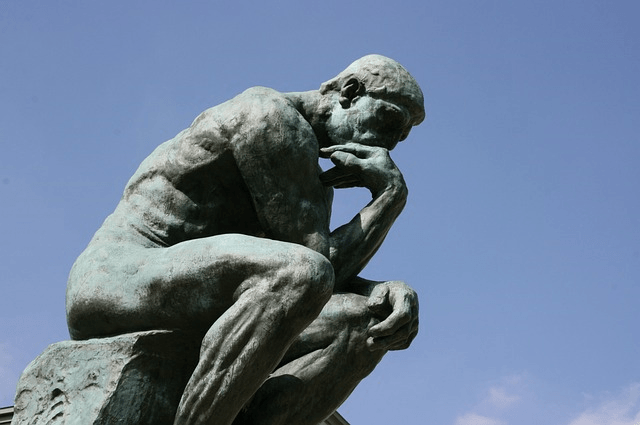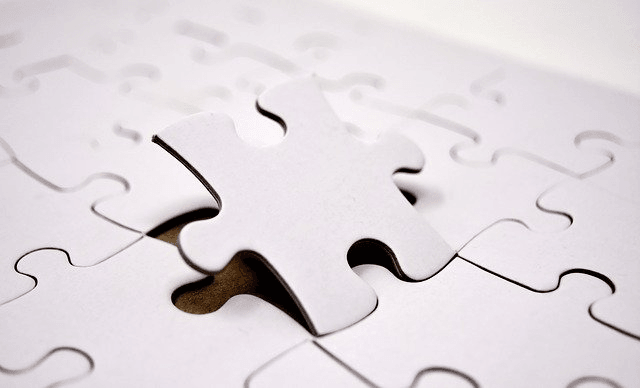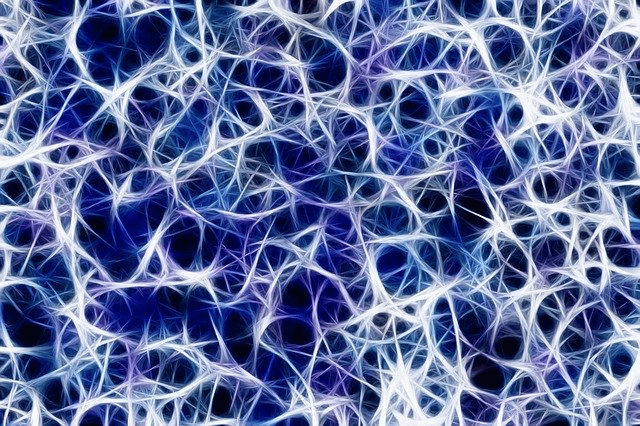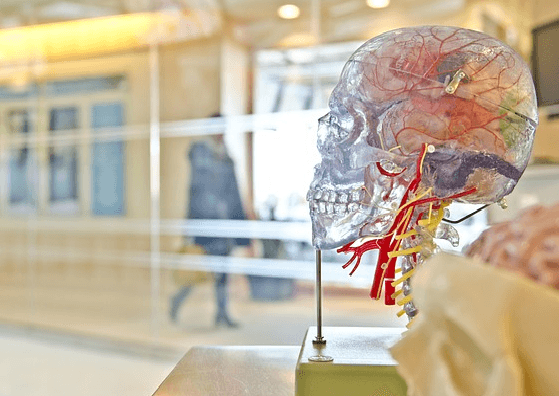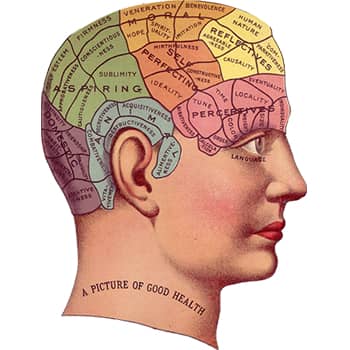
You wonder…
How does your memory work?
Why do you remember worthless trivia but draw a blank on more significant information?
At parties, guests are impressed by your ability to recite obscure movie quotes. But, you can’t remember the name of your boss’s spouse five minutes after being introduced! Frustrating!
Are you losing it? Hardly.
Is it possible to improve your memory? Certainly!
Let’s take a first step toward improving your memory by discovering the process that develops a memory in the first place.
To help you understand what psychologists recognize as the three stages of memory at a glance, let’s start with this infographic:
Next, here’s a brief overview of what this post will cover:
What is Memory?
What are the 3 Stages of Memory?
Stage 1: What is Sensory Memory?
Stage 2: What is Short-Term Memory?
Stage 3: What is Long-Term Memory?
FAQs About the 3 Stages of Memory
What is Memory?
Memory refers to our ability to store and recall information, which in turn helps us later in life. In other words, our memory gives us the ability to remember something that we experienced or learned in the past, like how to tie shoelaces or the capitals of South American countries.
As we’ll soon see, our senses and short-term memory have roles in how we retain information. But when we talk about remembering something, we’re generally referring to its retrieval from our long-term memory.
At times, it seems effortless to process and later recall new information. Other times, learning new information and remembering it can be challenging. What causes these challenges?
To understand how memories are formed and saved, it’s helpful to consider the models proposed by those who study human memory. When you research memory science, you’ll notice that different experts talk about very similar concepts using different terms. These differences and similarities of terminology are normal in all sciences.
For example, Simply Psychology explains the full cycle learning and memory model of “Encoding, Storage and Retrieval” as the three stages of memory.
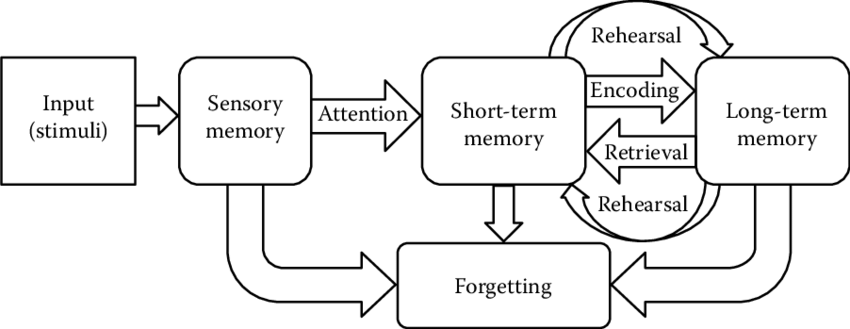
However, memory enthusiasts typically focus on the Atkinson-Shiffrin three-stage model of memory: “Sensory Memory, Short-term Memory, and Long-term Memory”.
For our purposes, the Atkinson-Shiffrin model makes the most sense to draw upon because Richard C. Atkinson performed studies related to learning vocabulary, one of the core focuses of the Magnetic Memory Method website.
Let’s dive deeper into these three stages of memory.
What Are the 3 Stages of Memory?
In the late 1960’s, cognitive scientists Richard Atkinson and Richard Shiffrin proposed a linear model (often called “the multi-store model”) of human memory with three sequential stages.
A stored memory starts as a sensory memory, moves to short-term memory and then transfers into long-term memory.
However, some experiences and information do not progress through each stage and are abandoned without being stored in short- or long-term memory.
We’ll discover that the amount and quality of attention we exert to process or encode a memory greatly influences the ease of its accessibility from long term storage.
But, we’re getting ahead of ourselves.
From their inception, our memories are developed and processed for storage through a systematic network, starting with sensations that we receive from our five senses.
Stage 1: What is Sensory Memory?
Sensory memory receives information from all of our senses. Every sight, sound, smell, taste, or touch that we experience is processed for only a few seconds (or less) in our sensory Memory. Sensory memory responses are automatic and we don’t have control over how we process information from our senses.
The sensory register is another name for sensory memory, where sensory perceptions are retained in each of the five distinct sensory memory stores. Each sensory memory type holds information based on our distinct sensory experiences, each of which you can improve by completing sensory memory exercises.
What Are 5 Types of Sensory Memory?
The Types of Sensory Memory (Sensory Memory Modalities) are relative to the sensory experiences they store:
- Iconic memory stores interpretations of visual experiences
- Echoic memory stores the interpretations of sounds
- Haptic memory stores the interpretations related to tactile experiences
- Olfactory memory stores information related to the sense of smell
- Gustatory memory stores information related to the sense of taste.
The duration of information retained in sensory memory ranges from approximately 200 milliseconds in iconic memory to approximately 3-4 seconds in echoic memory.
What Are Some Examples of Sensory Memory?
We don’t have control over our sensory memory, so we nonconsciously process the information we receive.
Here are a few examples that demonstrate our sensory memory at work:
Visual Afterimages
Consider the light trails that we see when we swing a bright light in the dark (like a sparkler). Our iconic (visual) memory lasts up to a half-second and the sparkler moves faster than the rate we can process the movement of the light.
The impression of light along the sparkler’s path remains in our iconic memory creating the illusion of a trail of light behind the sparkler.
Speech and Communication
Echoic (sound) memory lasts for about 3 to 4 seconds and is important in speech and communication. Initially, when we hear a sound, we “replay” the sound briefly in sensory memory which helps us determine what the sounds (or words) are.
Getting a Grip
Haptic (touch) memory is responsible for our initial assessment of the fine motor skills we need (power grip vs. precision grip) to grasp an object, based on its visual size.
Sensory Memory: An Important First Step
As documented by cognitive psychologist George Sperling, our sensory memory has an extremely limited capacity and duration. It’s understandable that most sensory impressions are ignored and dropped from further memory encoding.
But, as the first step in storing information for a longer term, sensory memory allows us to selectively perceive and process sensory information to initiate the memory encoding process in short-term memory.
Stage 2: What is Short-Term Memory?
Short-Term Memory is the second stage of the Atkinson-Shiffrin model, where active thoughts are held.
As the name implies, this stage of memory lasts for a short amount of time, generally less than a minute (between 15 and 30 seconds). But the duration of the information held here is not the only distinction of short term memory.
The storage capacity of short-term memory is small, as suggested by George Miller in his 1956 article, “The Magical Number Seven, Plus or Minus Two: Some Limits on Our Capacity for Processing Information.”
Miller’s studies led him to the idea that humans have 5 to 9 “slots” to store information in short term memory.
So, with only 15 to 30 seconds and a limited capacity for holding data, how do we remember anything at all?
How We Enhance Short-Term Memory Capacity and Duration
To help process information in short-term memory, we use inherent retention techniques such as “chunking” and “rehearsal” prior to encoding it into long-term memory. (Other learned memory-enhancing techniques are helpful too!)
Chunking
Miller’s Law states that short-term memory is limited to about 7 “slots” of information, but expanded the idea to suggest that “chunking” information in those slots enhances our ability to retain more information in short term memory. This explains our ability to quickly learn a 10-digit phone number when we organize the number in segments of 3-digits, 3-digits and 4-digits.
Rehearsal
The extremely limited duration of short-term memory explains how new information continually displaces older information. But we deliberately extend the “life” of the information by repeating or rehearsing the information, which resets our so-called short-term memory “timer.” Attentive rehearsal helps process or encode information for long-term storage and guard against interference that may disrupt the encoding process.
How Does Short-Term (or Working) Memory Work?
Short-Term Memory, sometimes referred to as “Working Memory”, is the temporary storage and processing stage in which most of the effort for retaining memory happens.
Our brain processes what we experience through sensory memory and passes it along to our short-term memory, where sensory information is interpreted and encoded into memory. This encoding requires attention and rapid comparison of the new information presented to information we already have in our long-term memory.
This semantic encoding happens when we apply meaning or context to a sensory experience and process it enough to embed it into our long-term memory.
Atkinson and Shiffrin contended that information moves automatically from short-term into long-term memory, but the amount of time and attention spent encoding in the short-term memory store enhances the strength of the memory in long-term storage.
Stage 3: What is Long-Term Memory?
Long-Term Memory is responsible for the storage of information in the brain for longer periods of time, limited only by the length of life. And remarkably, it seems that human long-term memory storage capacity is limitless.
Types of Long-Term Memories
Long-term memories can be categorized into two different types:
Implicit memories (procedural memories) are habitual in nature, like knowing how to push a lawnmower, operate a computer mouse, or sing the alphabet song. Implicit memories are the ability to recall familiar things or easily execute common motor skills.
Explicit memories (declarative memories) require a more conscious effort to recall. An example of an explicit semantic (facts) memory is reciting the number of days in each month. Your recollection of your first solo trip as a new driver is an example of an explicit episodic (experiential) memory.
Most of the curricula that are presented to us in schools are intended for storage and later retrieval from our explicit semantic memory. When you compute your average monthly gas mileage, you use your explicit memory to recall how to make the calculation.
Memory Recall & Retrieval
We recall and retrieve memories by accessing information that has been encoded and stored in our long-term storage.
The two main methods of memory access are recognition and recall:
Recognition is the ability to compare a current event or object with something that previously experienced. (For example, noticing that a squirrel is in your garden.)
Recall is the ability to remember a concept about something that isn’t physically present. (Knowing your dog’s birthday.)
Memory recall is quite efficient. Most of human memory is retrieved directly, meaning that our brain doesn’t sort sequentially through the volumes of stored information before finding the correct information. Hierarchical inferences, such as groups or subsets of information, also help the efficiency of memory recall.
Although our memory recall is efficient, it’s not precise. Contrary to the precision of a sports video “instant replay”, our brains recreate and reconstruct the pieces of memory from different storage locations, following nerve pathways that were formed when the memory was encoded.
How We’re Making Memory Better
In the past 50 years, results of cognitive psychology studies have proposed several slight variations of this theoretical model. Human memory research continues to be helpful in understanding how the human brain works while suggesting innovative ways to enhance learning and memory, such as these 13 cognitive activities adults can use to sharpen their brains.
Small adjustments like improving your concentration and repeating new information in your short-term memory can help improve your memory recall.
The following FAQs provide some additional information, specifically about how memory is organized and highlights more techniques and methods that’ll enhance our ability to learn and remember with ease.
FAQs About the 3 Stages of Memory
How are memories physically created in our brains?
Encoding a memory in the human brain is a biological chain of events that gathers information from our senses through the primary sensory cortex (primary visual cortex, primary auditory cortex, etc.), then blends them in the brain’s hippocampus. The hippocampus then “categorizes” this new information by comparing it to what’s already stored in memory.
In popular psychology theory, information is processed in the hippocampus and other parts of the brain and stored in long-term memory as an engram. Still not completely understood, an engram is a hypothetical physical or biochemical change that happens to neurons in the brain.
Physically, short-term memory occurs in the frontal lobe and the parietal lobe whereas long-term memory creation initiates at the hippocampus but is stored through various locations of the brain.
How is long term memory organized?
It’s not known exactly how our long-term memory is organized, but scientists recognize that the information in our brains must be stored in a very efficient network or system. They have four common theories of long-term memory organization:
Memory Organizational Theory #1: Hierarchies
The hierarchical theory claims that information is stored in memory at varying degrees of specificity or complexity within a group or class.
Memory Organizational Theory #2: Semantic Networks
Similar to hierarchies, semantic networks have less structure and have multiple links to other groups or classes. Connections to other groups, classes or types of memory are unique and based on personal experience. When new information is added to the semantic network, it’s linked to an existing piece of information already in the network.
Memory Organizational Theory #3: Schemas
Schemas are concepts that are developed based on life experiences that help a person anticipate outcomes of certain scenarios. A role schema helps to predict the behavior of a person who fits a particular role.
For example, on the first day of 5th grade, you expected your new teacher to act a certain way based on your experience with teachers in previous grades.
Memory Organizational Theory #4: Connectionist Network
The Connectionism theory or Parallel Distributed Processing theory claims that information in memory is stored in small, multi-connected units throughout the brain. Each unit is a collection of nodes that represents a concept. Activated multi-layer nodes activate other connected multi-layer nodes and “learn” other associations based on personal exposure to certain concepts.
What is Elaborative Encoding?
Most human memories are consolidated information learned by associating new information with something already learned. This elaborative encoding enhances the quality of long-term memory when we link a new experience to something we already have in memory.
We remember and are more likely to recall information that is made familiar or personally more meaningful to us. Conversely, information that’s not relatable or easy to understand tends to be misremembered or not remembered at all due to the lack of meaningful connections.
Mnemonic memory aids are elaborative encoding techniques that use words, acronyms or phrases to help us remember things. Some examples are:
- The word “HOMES” to learn the names of the Great Lakes
- The poem to help remember spelling words with i’s and e’s: “I before E except after or when sounded as ‘A’ as in neighbor or weigh.”
- The acronym “Roy G. Biv” to help remember the colors of the spectrum
- “Righty-tighty, lefty-loosey” to remember which way to turn to tighten or loosen a screw.
What Are Additional Memory Techniques I Can Learn?
Brain exercises, memory aids, and training tools are great ways to improve your concentration and memory!
Subscribe to receive Anthony Metivier’s Free Magnetic Memory Method Video Series to learn a powerful tool that’ll help you learn and recall information with ease in just a few days!
Related Posts
- Memory Athlete Braden Adams On The Benefits Of Memory Competition
Braden Adams is one of the most impressive memory athletes of recent times. Learn to…
- 5 Memory Palace Examples To Improve Your Memory Training Practice
Here are 5 Memory Palace examples that will improve your memory training practice quickly, even…
- How to Memorize Something Fast: 5 Simple Memory Techniques
Wondering how to memorize something fast? Read now for 7 solid steps you can follow…


